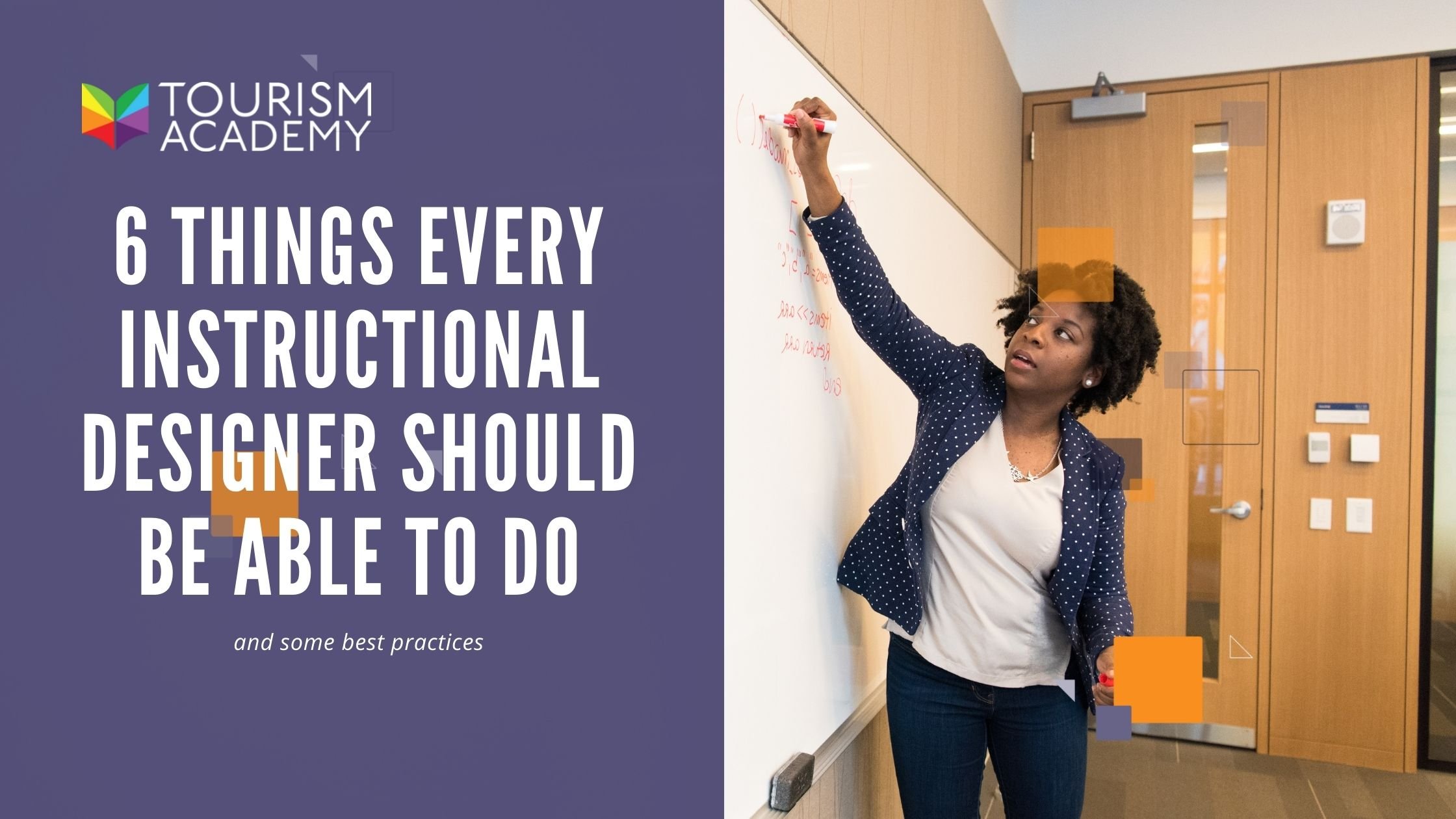
6 Things Every Instructional Designer Should Be Able to Do
If the person who's creating your tourism ambassador training, stakeholder workshops or keynote address isn't able to do these 6 things, you're missing out on educational opportunities.
Understand the Best Practices of Teaching
There are many models and methods of teaching available for instructional designers to use. Keeping up to date on the newest and best practices in teaching will help an instructional designer, trainer or keynote speaker ensure that every learner at any ability will understand the material presented to them.
In order to develop the best practice for teaching the concept(s) in a lesson, an instructional designer must consider:
-
the objectives of a lesson
-
the audience
-
the delivery medium
-
how to map a learner’s path through a lesson
Communicate Effectively and Efficiently
Communication is crucial in designing a content-rich lesson or course for tourism, travel & hospitality professionals. Instructional designers need to effectively communicate with the subject matter experts to fully gain an understanding of the important concepts to include in the lesson or course. Subject matter experts are typically busy with other priorities, so the role of an instructional designer is to ensure all communication with the expert is well-planned and productive. Any communication with the expert needs to happen efficiently, in a timely fashion, so that both parties can collaborate on the project and plan the next steps for all people involved. Planning regular check-ins, developing a collaboration document, and asking for the subject matter expert’s feedback throughout the development process will help maintain good communication.
RELATED: Find An Amazing Educator For Your Meeting or Conference
RELATED: Custom Course Development For Tourism Training
Engage Learners
Engaging the learner is essential to having an effective lesson or course. Instructional designers must be able to use a variety of item types, media, images, and delivery methods to keep a learner interested in learning. Using different engagement methods such as scenario-based learning, adaptive learning, and simulations will help maintain a learner’s attention. Instructional designers need to use a variety of methods to ensure learners are excited to learn the content and not just passively learning the material.
Use Creativity and Consistency
Designing a visually appealing storyboard requires creativity on the part of the instructional designer. Not only does the instructional designer need to choose the correct color palette, fonts, and layouts, but the storyboard needs consistency. Using too many different colors or fonts, colors or fonts that clash with each other, or too many different font sizes can cause chaos on the screen and distract the learner from focusing on the content. Consistency is also key; this includes using the same fonts for headers and content, aligning objects, and using the same colors to ensure the user isn’t focused on the format shifts on each screen. Generally, simplicity is the best approach to the use of visual effects on the screen.
Develop and Use Clear and Relevant Images and Media
Images and media chosen for a lesson need to be clear so the learner understands what the content is meant to portray. Pixelated, blurry, or unreadable images and media can frustrate and confuse the learner. The chosen images and media need to be relevant to the content presented. Choosing images or media that are “cool” or “exciting” but don’t add to the content will confuse the learner. Instructional designers need to develop and use images and media that enhance the learning experience and fit the content.
Be Flexible and Versatile
Instructional designers need to be flexible and versatile when it comes to development. The storyboard or lesson could feel like it’s completed—then a new idea is presented that requires the designer to start from scratch. In addition, there are many different options when it comes to developing lessons and courses. Companies all have their preferred method for how a storyboard should be designed. An instructional designer needs to be familiar and competent with the many different applications and software used to develop lessons and courses.
Programs providing quick and effortless development include:
-
Powerpoint
-
Google slides
-
Any authoring software (by writing in the Notes section)
Authoring software that designers can use to develop a lesson on any given platform includes:
-
Articulate Storyline
-
Adobe Captivate
-
Smart Sparrow
-
Any in-house authoring tools
An instructional designer wears many hats in the development of a lesson or course, including teacher, visual designer, communication manager, and sometimes developer. It’s important to be flexible, versatile, creative, consistent, knowledgeable about various teaching methods, and an effective communicator.


Leave a comment